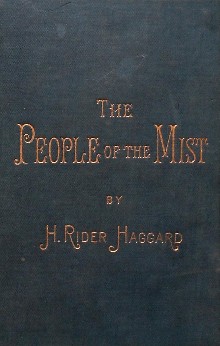
Sword and sorcery (S&S) or heroic fantasy is a subgenre of fantasy characterized by sword-wielding heroes engaged in exciting and violent adventures. Elements of romance, magic, and the supernatural are also often present. Unlike works of high fantasy, the tales, though dramatic, focus on personal battles rather than world-endangering matters. Sword and sorcery commonly overlaps with heroic fantasy. The genre originated from the early-1930s works of Robert E. Howard. The term "sword and sorcery" was coined by Fritz Leiber in the May 1961 issue of the fantasy fanzine Amra, to describe Howard and the stories that were influenced by his works. In parallel with "sword and sorcery", the term "heroic fantasy" is used, although it is a more loosely defined genre.

Sir Henry Rider Haggard was an English writer of adventure fiction romances set in exotic locations, predominantly Africa, and a pioneer of the lost world literary genre. He was also involved in land reform throughout the British Empire. His stories, situated at the lighter end of Victorian literature and including the eighteen Allan Quatermain stories, continue to be popular and influential.

Eric Brighteyes is an epic Viking novel by H. Rider Haggard that concerns the adventures of its eponymous principal character in 10th-century Iceland. The novel was first published in 1891 by Longmans, Green & Company. It was illustrated by Lancelot Speed.
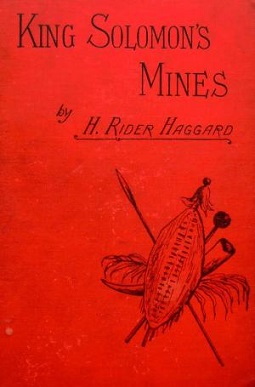
King Solomon's Mines (1885) is a popular novel by the English Victorian adventure writer and fabulist Sir H. Rider Haggard. It tells of an expedition through an unexplored region of Africa by a group of adventurers led by Allan Quatermain, searching for the missing brother of one of the party. It is one of the first English adventure novels set in Africa and is considered to be the genesis of the lost world literary genre. It is the first of fourteen novels and four short stories by Haggard about Allan Quatermain. Haggard dedicated this book to his childhood idol Sir Humphry Davy.

She, subtitled A History of Adventure, is a novel by the English writer Sir H. Rider Haggard, published in book form in 1887 following serialisation in The Graphic magazine between October 1886 and January 1887. She was extraordinarily popular upon its release and has never been out of print.

Allan Quatermain is the protagonist of H. Rider Haggard's 1885 novel King Solomon's Mines, its one sequel Allan Quatermain (1887), twelve prequel novels and four prequel short stories, totalling eighteen works. An English professional big game hunter and adventurer, in film and television he has been portrayed by Richard Chamberlain, Sean Connery, Cedric Hardwicke, Patrick Swayze and Stewart Granger among others.
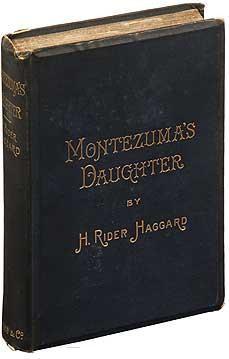
Montezuma's Daughter, first published in 1892, is a novel by the Victorian adventure writer H. Rider Haggard. Narrated in the first person by Thomas Wingfield, an Englishman whose adventures include having his mother murdered by his Spanish cousin Juan de Garcia, a brush with the Spanish Inquisition, shipwreck, and slavery. Eventually, Thomas unwillingly joins a Spanish expedition to New Spain, and the novel tells a fictionalized story of the first interactions between the natives and European explorers. This includes a number of misunderstandings, prejudice on the part of the Spaniards, and ultimately open war.
The lost world is a subgenre of the fantasy or science fiction genres that involves the discovery of an unknown Earth civilization. It began as a subgenre of the late-Victorian adventure romance and remains popular into the 21st century.
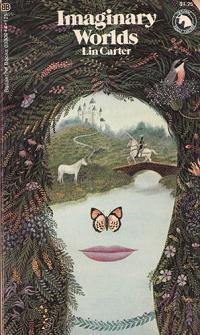
The Ballantine Adult Fantasy series was an imprint of American publisher Ballantine Books. Launched in 1969, the series reissued a number of works of fantasy literature which were out of print or dispersed in back issues of pulp magazines, in cheap paperback form—including works by authors such as James Branch Cabell, Lord Dunsany, Ernest Bramah, Hope Mirrlees, and William Morris. The series lasted until 1974.
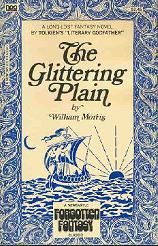
The Newcastle Forgotten Fantasy Library was a series of trade paperback books published in the United States by the Newcastle Publishing Company between 1973 and 1980. Presumably under the inspiration of the earlier example set by the Ballantine Adult Fantasy series, the series reissued a number of works of fantasy literature that had largely been forgotten, being out of print or otherwise not easily available in the United States, in durable, illustrated trade paperback form with new introductions. For a number of works the Library’s editions constituted the first U.S. or first paperback edition. Together with the earlier series from Ballantine Books, it contributed to the renaissance of interest in the fantasy genre of the 1970s.
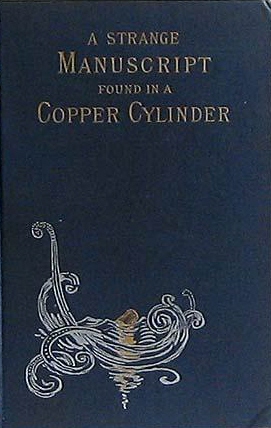
A Strange Manuscript Found in a Copper Cylinder is the most popular book by the Canadian writer James De Mille. It was serialized posthumously and anonymously in Harper's Weekly, and published in book form by Harper and Brothers of New York City during 1888. It was serialized subsequently in the United Kingdom and Australia, and published in book form in the United Kingdom and Canada. Later editions were published from the plates of Harper & Brothers' first edition during the late 19th and early 20th centuries.

The World's Desire is a fantasy novel first published in 1890 and written by H. Rider Haggard and Andrew Lang. It was published in paperback by Ballantine Books as the fortieth volume of the Ballantine Adult Fantasy series in January 1972.

Cleopatra: Being an Account of the Fall and Vengeance of Harmachis is an adventure novel written by English author H. Rider Haggard and first printed in 1889 by Longmans. Cleopatra mixes historical action with supernatural events, and could be described as a historical fantasy novel.
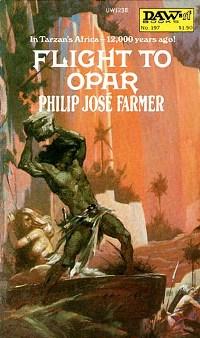
Flight to Opar is a fantasy novel by American writer Philip José Farmer, first published in paperback by DAW Books in June 1976, and reprinted twice through 1983. The first British edition was published by Magnum in 1977; it was reprinted by Methuen in 1983. It was later gathered together with a preceding novel, Hadon of Ancient Opar, and a sequel, The Song of Kwasin, into the omnibus collection Gods of Opar: Tales of Lost Khokarsa (2012). The work has also been translated into French. It and the other books in the series purport to fill in some of the ancient prehistory of the lost city of Opar, created by Edgar Rice Burroughs as a setting for his Tarzan series.

Allan's Wife and Other Tales is a collection of Allan Quatermain stories by H. Rider Haggard, first published in London by Spencer Blackett in December 1889. The title story was new, with its first publication intended for the collection, but two unauthorized editions appeared earlier in New York, based on pirated galley proofs. The other three stories first appeared in an anthology and periodicals in 1885, 1887, and 1886.

Realms of Wizardry: An Anthology of Adult Fantasy is an American anthology of fantasy stories, edited by American writer Lin Carter. It was first published in hardcover by Doubleday in December 1976 as the second of two such anthologies continuing a series of nine assembled by Carter for the Ballantine Adult Fantasy series.
Colonel Quaritch, V.C.: A Tale of Country Life is an 1888 novel by H Rider Haggard.
Heart of the World is an 1895 book by H. Rider Haggard about a lost Mayan city in Mexico. Its importance in the history of fantasy literature was recognized by its republication by the Newcastle Publishing Company as the tenth volume of the Newcastle Forgotten Fantasy Library in September, 1976.

Benita: An African Romance is a novel by H. Rider Haggard.
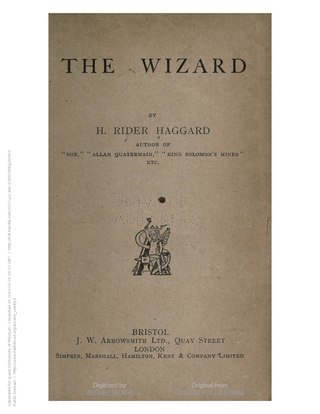
The Wizard is a novel by Henry Rider Haggard, first published by Longmans, Green, and Co., in 1896. The Wizard is one of the many examples of imperialist literature. According to Rebecca Stott, author of the article “The Dark Continent: Africa as Female Body in Haggard’s Adventure Fiction,” Haggard's fiction is still popular today and attempts to expose a “cultural and historical definition of white masculinity at its most rugged and its most terrified.”
